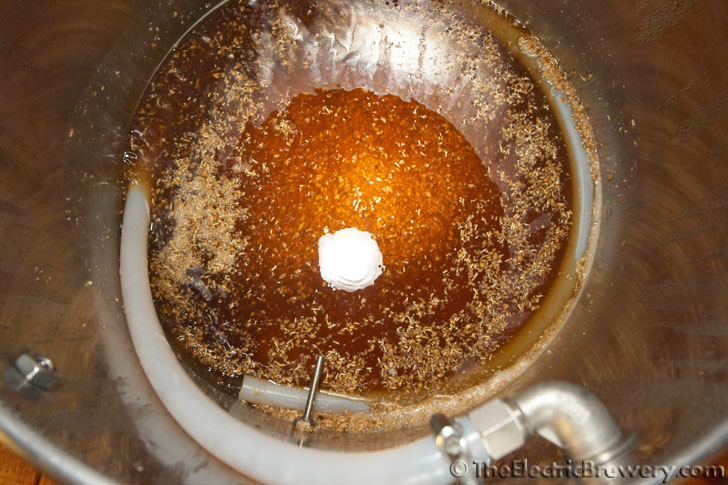If you frequent other brewing websites you'll notice that there are countless methods for delivering sweet wort and sparge water to the top of the grain bed such as perforated manifolds and rotating arms. We find these an unnecessary complication that require extra work, extra cleaning, and may clog due to the small holes if some grain is inadvertently circulated. Permanently installed devices will also get in the way, making cleaning the MLT more difficult. Special rotating sparge arms cannot be used during the mash recirculation as the introduction of oxygen to the sweet wort by splashing needs to be minimized, so extra steps are required to add/remove these devices between the time the mash is complete and sparging begins.
Brewers argue that without these special perforated manifolds or rotating arms that channelling will occur. Channelling occurs when the sparge water used to rinse the grains does not pass through the grain bed evenly and leaves sugars behind, reducing the systems efficiency. In an ideal setup the sparge water will pass through the grain bed evenly from top to bottom, rinsing the sugar off every last bit of grain. In poorly designed setups, the liquid will create 'channels' from the top of the grain bed to the bottom. This typically happens when the liquid must pass through a smaller area at the bottom of the kettle such as a mesh hose. In our setup, the large perforated false bottom helps ensure that the sparge water passes evenly through the entire grain bed from top to bottom, washing all the sugar out in a piston like manner. Our setup repeatedly achieves high efficiency even though we 'only' use this simple piece of silicone hose for mash recirculation and sparging. Due to the simplicity of this setup, clogging is not possible and there are no extra parts to clean or to get in the way when you clean the kettle. Simpler is better!
Still not convinced? We admit those rotating sparge arms look pretty cool in action. Consider this: Sabco (makers of the Brew-Magic gas powered brewing systems) also use a simple silicone hose like ours for recirculating and sparging. They've sold hundreds if not thousands of their smaller multi-thousand dollar gas setups worldwide. If a $50 rotating sparge arm worked better we assume that they would be using it. Blichmann Engineering (the manufacturer of our BoilerMaker kettles) sells an optional sparge arm called the 'Auto Sparge'. It also uses a piece of silicone hose to recirculate and sparge in a manner similar to our setup.












































![Craft A Brew - Safale BE-256 Yeast - Fermentis - Belgian Ale Dry Yeast - For Belgian & Strong Ales - Ingredients for Home Brewing - Beer Making Supplies - [3 Pack]](https://m.media-amazon.com/images/I/51bcKEwQmWL._SL500_.jpg)













